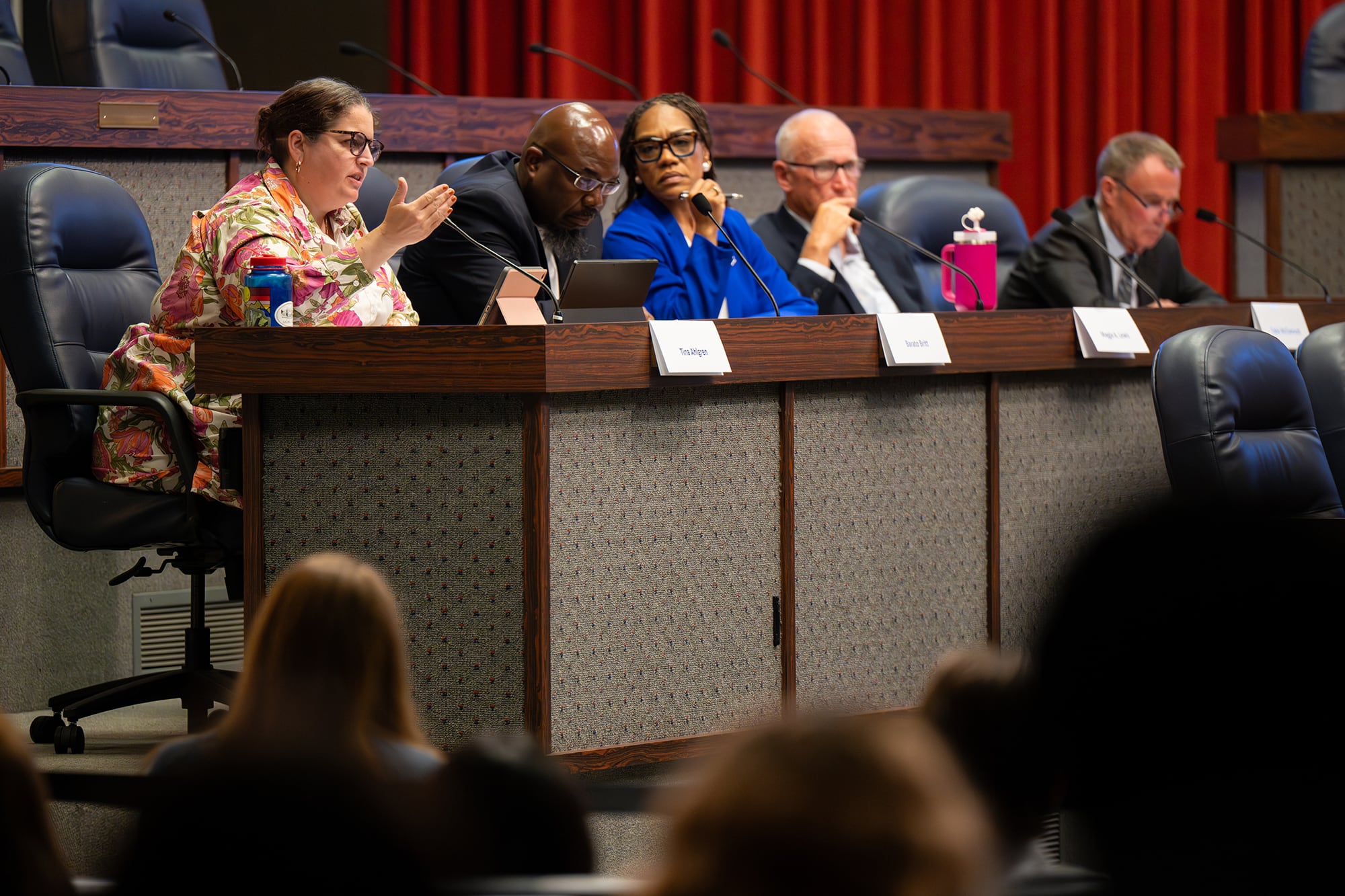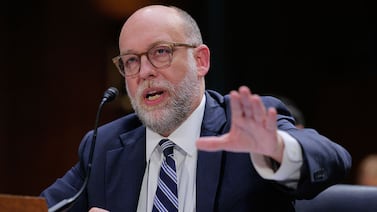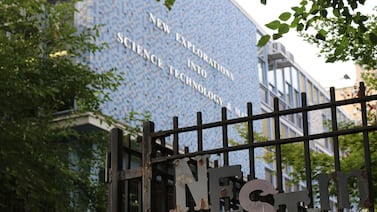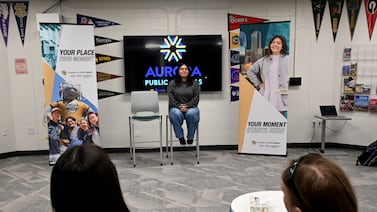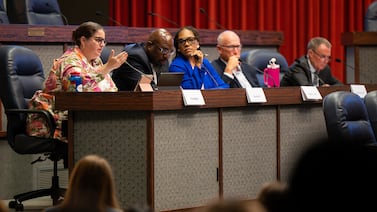Sign up for Chalkbeat Indiana’s free daily newsletter to keep up with Indianapolis Public Schools, Marion County’s township districts, and statewide education news.
It’s a critical time for the future of public schools in Indianapolis.
The growth of school choice over the past two decades has ushered in a fractured educational landscape that the Indianapolis Local Education Alliance, mandated by state lawmakers, now must solve.
There are 49 district schools and 54 charter schools accountable to different authorities, according to figures from the mayor’s Office of Education Innovation, or OEI. Some charters are part of the district’s Innovation Network of autonomous schools that use IPS buildings and transportation. Others are independent.
Enrollment data indicate there are roughly 9,000 more seats than students enrolled in schools across the city. Schools have no local measure of quality, although a statewide framework is in development. And IPS has underutilized building space.
Transportation and school buildings are the two topics the ILEA must submit recommendations on to state and local leaders, but the group could consider suggestions for these and other issues, such as policies for students with disabilities, that are critical to the city’s educational landscape.
As the ILEA continues its work, at least five organizations have made recommendations on these topics through petitions and public statements in an effort to influence the group’s advice to city and state leaders. They include the IPS school board and groups more critical of charter schools — the IPS Parent Council and the Central Indiana Democratic Socialists of America — as well as RISE Indy, an education advocacy group that works with charter and traditional schools, and parents and educators from Stand for Children Indiana, a group that has pushed for high-performing charter schools. Although it has not released a plan, the charter advocacy group the Mind Trust has stressed that IPS has a severe structural budget deficit and must transition to a financially sustainable future.
Online petitions from the Parent Council and the Central Indiana DSA have roughly 300 signatures. A petition supporting Stand for Children’s “Together We Thrive” proposal has over 2,000 signatures according to Stand.
Below are the major topics addressed in the proposals and the changes the groups suggest the ILEA should make. Not every organization made recommendations on every topic.
Should there be a cap on new schools in Indianapolis?
The IPS board is calling for a cap on new schools, while the Central Indiana DSA and Parent Council are calling specifically for a cap on charters. The Parent Council says the moratorium on new charter schools should go until 2035.
The expansion of charters within IPS borders has generated instability for students, these groups have argued.
Historically, 1 in 3 charter schools has closed, and IPS has closed schools as a result of increased competition.
These three groups argue that the city should assess its actual need for schools.
“The long-term success of Indianapolis students depends on right-sizing the number of schools within the boundary — ensuring we have the right number of schools, in the right places, to serve all students effectively,” the school board said in its statement.
RISE Indy and Stand’s proposals don’t suggest a cap on schools, but rather advocate for replicating successful ones.
Who should govern Indianapolis charter and IPS schools?
Currently, IPS and charter schools have different governance models. Traditional IPS schools are overseen by a superintendent hired by the elected school board. Charter schools have their own nonprofit school boards that hire school leaders and are given the ability to open schools by charter authorizers, which are responsible for holding charters accountable. Indianapolis charter schools currently use three authorizers.
The school board wants to remain an elected board with authority over district schools and suggests that OEI, which authorizes most Indianapolis charters, should serve as the sole authorizer for Indianapolis.
The Parent Council also wants to keep an elected board for IPS, and requests that charter authorizers consider whether to continue granting a school’s charter every five years rather than 15.. The council also wants charters partnering with IPS to submit financial and achievement data to the district.
The Central Indiana DSA argues strongly for an elected school board and says that charters should be under the authority of the board rather than OEI.
Stand’s proposal suggests a hybrid school board of elected and appointed members that would serve as a charter authorizer. RISE Indy also suggests an elected board with some appointed seats and told Chalkbeat that two authorizers would be best practice.
How should Indianapolis schools be graded?
All groups want a universal accountability framework by which to measure school success.
RISE Indy’s proposal provides the most detail for what that framework could look like. The group calls for a system that tracks success across all student subgroups, ensures a reduction in discipline, and improves outcomes for students with disabilities. Schools that consistently underperform could face potential closure or consolidation regardless of whether they are traditional or charter, the group says.
Schools last received state letter grades in 2018, and since then, there hasn’t been a summative measure to determine schools’ performance.
The State Board of Education will formulate a new A-F rating system by December, but it’s unclear whether the ILEA will recommend an accountability system and whether that system would be the state’s framework.
Who should provide transportation for charters, IPS?
Currently, IPS contracts with First Student for its yellow bus service and offers IndyGo passes for eligible high school students.
Transportation varies across charter schools. Just fewer than half of independent charter schools offer bus services, according to an OEI report. Roughly half of charters in the IPS Innovation Network use IPS bus services.
Most of the 30 Innovation schools use IPS transportation at no cost or pay a significantly reduced rate, according to IPS.
The Central Indiana DSA wants charters to pay their share for transportation.
“If IPS is to extend its transportation services to charters, we can’t rob IPS students to pay for it,” the group says in a statement. “We must create new funding sources, or charters must pay their fair share.”
Stand’s proposal suggests that IPS central office provide transportation for all schools.
RISE Indy suggests a separate transportation authority that allows schools to opt into a transportation system.
The district says transportation should prioritize student safety and equitable access, including for students with disabilities. IPS serves a higher percentage of students with disabilities than charter schools as a whole.
What should become of underused IPS buildings?
The district, the Parent Council, and the Central Indiana DSA support repealing a state law that requires districts to provide unused school buildings to charter schools for the sale or lease price of $1.
The law was meant to secure cheaper facilities for charters, which without property tax revenues have struggled with building acquisition. Instead, it has resulted in a lengthy legal battle between the district and the state. The two buildings that charters have purchased for $1 have needed costly renovations.
The school board wants unused school buildings to continue serving public needs, such as housing.
Stand’s plan suggests giving available buildings to schools that are successful, as determined by an accountability framework. RISE Indy also suggests rededicating unused or underutilized buildings for “world-class learning environments.” Neither group addresses the $1 law.
How much does it cost to educate an Indianapolis student?
The school board and Central Indiana DSA are also calling for adequate education funding for public schools.
But how much that amount might be is unclear. The school board challenged ILEA members to come up with a maximum and minimum dollar amount of what it takes to educate a child in Indianapolis.
While assessed property values skyrocketed in the years immediately following the pandemic — heralding good news for the district’s property tax revenues — IPS officials anticipate the tax base will decline in the future due to new property tax reforms. Charters, however, are expecting more property tax funds in the coming years.
And over the past decade, state and federal revenues have not covered the full cost of special education and English language learner services, according to IPS. The funding gap for special education has averaged $19.8 million annually, while the gap for English language learner services has averaged $6.5 million.
Stand’s proposal suggests reducing central office administration expenses to direct more funding to schools, but does not suggest an amount.
The next ILEA meeting is Oct. 22 at 6 p.m. at a location to be determined. The group must submit its recommendations to state and local leaders by the end of 2025.
Amelia Pak-Harvey covers Indianapolis and Lawrence Township schools for Chalkbeat Indiana. Contact Amelia at apak-harvey@chalkbeat.org.

